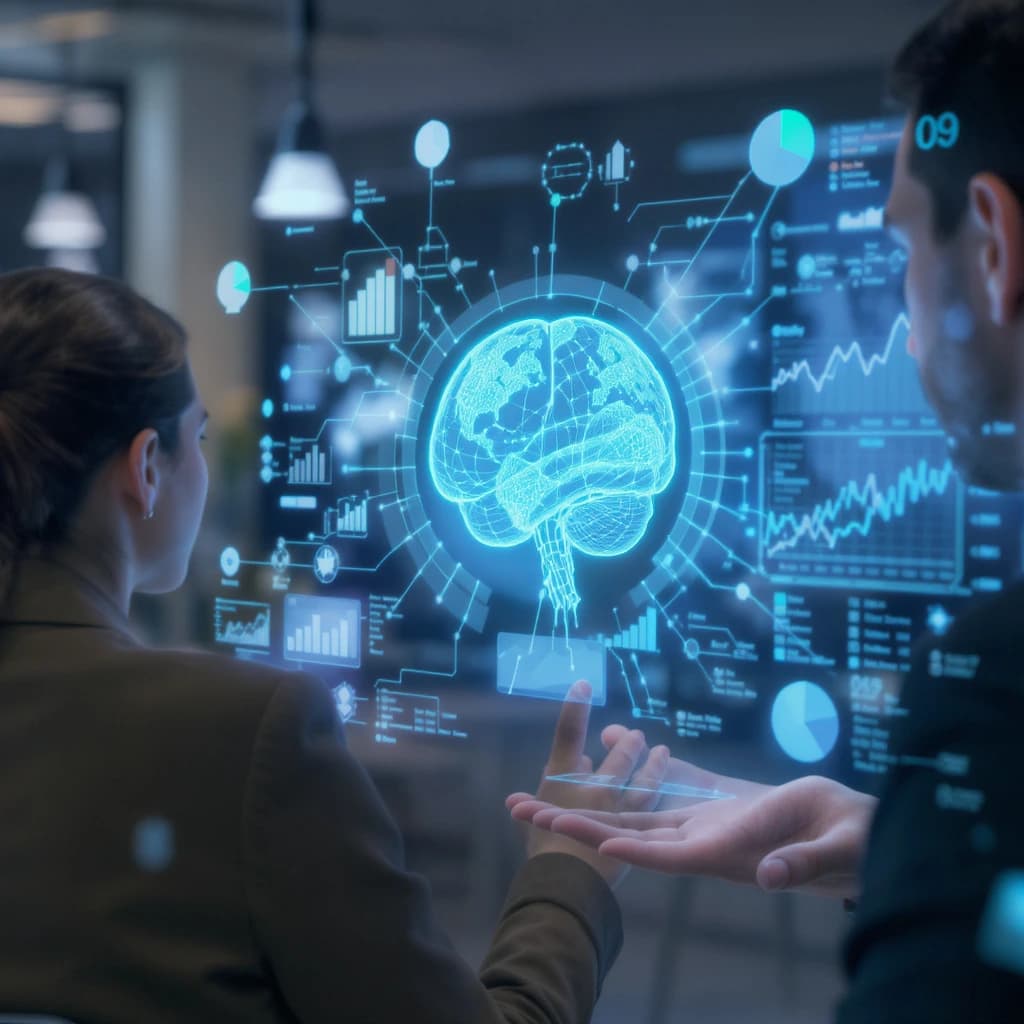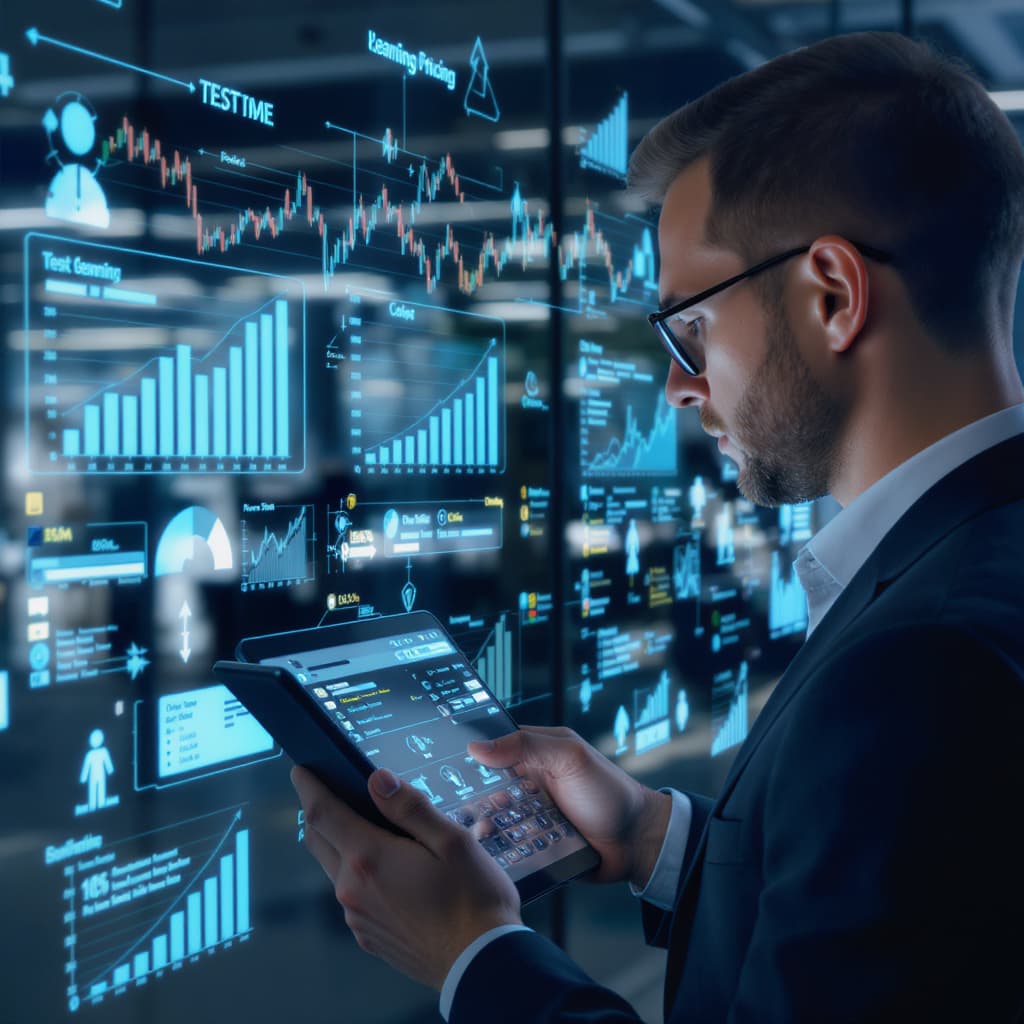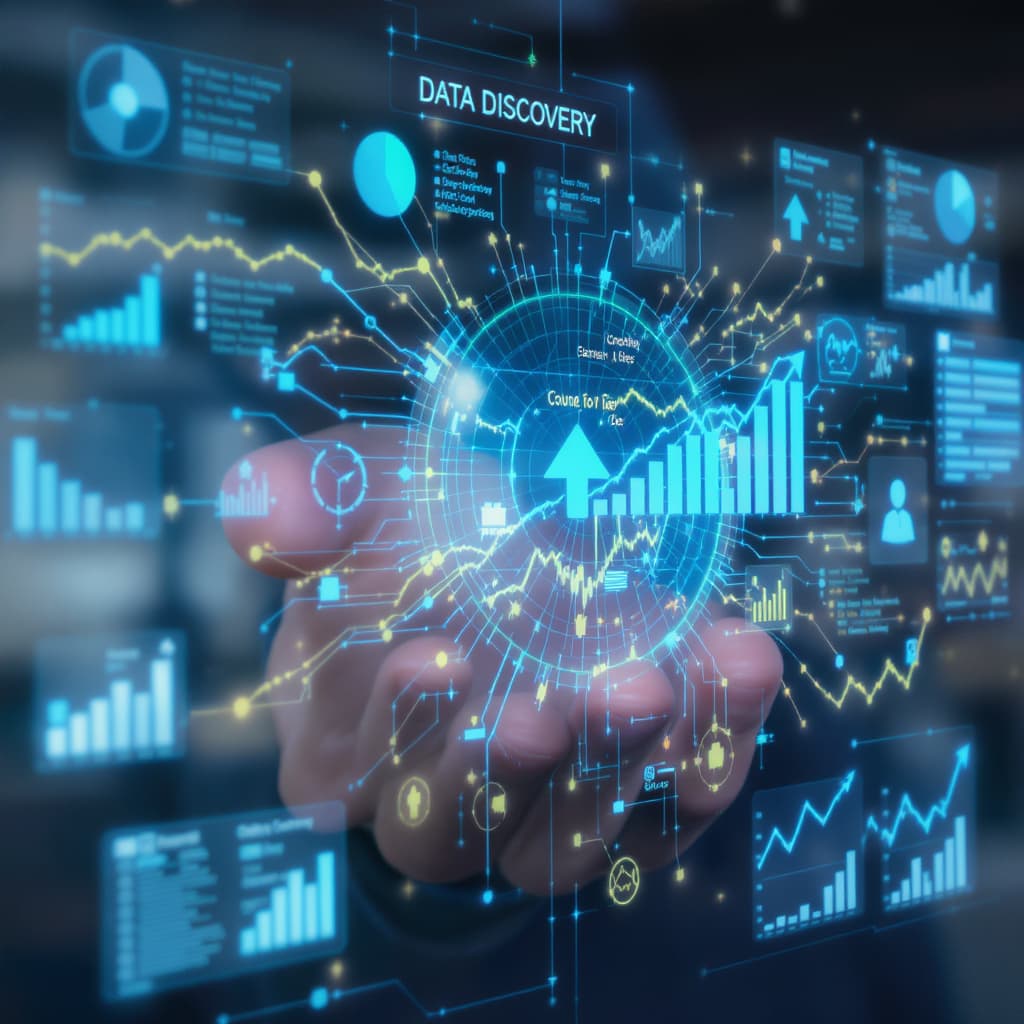Today, almost all businesses depend on data to present them clearly, and it is possible only when they implement the right tools for analyzing data. In the world of changing data visualization patterns, generative AI has become familiar.
The ultimate objective of visual data analysis with generative AI is to convert raw data into meaningful visual illustrations and improve your capability to transfer compellingly.
It can inspect automated data visualizations to point out correlations or trends and extend the time to obtain insights.
As developments in the GenAI sector manage issues such as illusions, trust in results, and bias, they can be combined into typical data visualization uses.
Uses of GenAI in Data Visualizations
Data visualizations can combine with GenAI features in multiple ways to upgrade performance.
Let's discuss how generative AI for data visualization can change the old visualization concept:
Create easily understandable charts
Analysts depend on GenAI to develop graphics, graphs, and charts to illustrate a dataset. Generative AI visual tools can suggest the ideal visualization of the data.
Automated suggestions remarkably reduce the skill level of users attempting to find out whether a Sankey diagram, a line chart, or a bar graph is an excellent tool for the task.
Offer insights from visuals.
Generative AI can automatically examine millions of data points to pinpoint trends and patterns.
It can update and modify the visualization in real time, but putting up dynamic updates needs enough work from the data team.
Data investigation
Data investigation explains the story behind data with simple-to-read, visually educational, and attractive charts.
Even though the process was developed with advanced Business Intelligence tools, it can still be strong, specifically for IT employees who aren't data scientists.
GenAI, integrated with data enhancement, can advance data investigation for tasks including examining unstructured data, georeferencing, translation, or integrating data with external data sources.
Completing the tasks faster results in quicker insights.
Data actions and insights
The final goal of generative AI for data analytics is to avoid the waste of time spent converting data into actions and meaningful insights.
According to Mike Lempner, VP of engineering and technology at Richmond, VA-based credit card servicer, Mission Lane, GenAI can expand the process of turning insights into useful actions.
Generative AI data visualizations can showcase the data in a simplified manner rather than depending on grid or tabular data.
Data visualization in AI makes visualization simpler for the user to inspect insights by indicating differences, similarities, and anomalies.
Simplifying analytics processes
According to Anthony Loss, director of solution strategy at San Francisco-based AWS consulting company, ClearScale, tasks like categorization and data segmentation can be automated by GenAI to simplify the analytics process.
For instance, teams must be grouped based on the business results they are accountable for carrying out data democratization.
Generative AI can rapidly classify millions of data inputs; hence, data teams can shift their focus to their independent duties and tasks, which can finally convert into a visualization.
Data visualization using AI helps marketers monitor campaign performance, CX leaders track sentiment, and retailers improve inventory.
Visual data analysis with generative AI reduces the need for manual coding, making data exploration simpler, faster, and accessible to everyone across your company.
Whether you're a product manager who wants to identify user trends or a data analyst who improves operations, it helps you see the full story of your data.
🚀 Ready to Witness the Use of Machine Learning Techniques within Your Organization?
How it Works
Challenges of Data Visualization and GenAI
Selecting a visualization
According to Lempner, the basic challenge an analyst comes across is deciding which visualization to use.
Data analysts have to format and prepare the data for visualization soon after choosing a type of visualization.
GenAI boosts the data teams' efficiency and productivity by automating important tasks.
Data formatting and preparation
Formatting and data preparation to respond to queries is one of the greatest challenges. GenAI ensures that it doesn't take much time.
"A year ago, you were following eight steps to format data for GenAI, which is now reduced to only a few steps as GenAI grows to manage multiple input data formats and acquires new features every month."
Restricted context windows
One of the familiar metrics of GenAI is the context window. Early models could store a few hundred words referred to as tokens in the working memory of those models.
Context windows are developing, but a few familiar models struggle with placing data in the centre of a large request.
The issues arise when teams decide to process bigger data sets, which might require dividing data into consumable pieces using fresh tools, including vector databases or LangChain.
Lempner also says GenAI deployment improves in difficulty with every extra dataset considered for visualization and analysis.
Context
Realizing the context of the data is a continuous challenge that requires data users to possess subject matter expertise.
For instance, GenAI uses customer survey data to create visualizations.
Importance of Data Visualization with Generative AI for Businesses
Let's define the importance of data visualization in AI and how it encourages business decision-making:
Better analysis of the data
The management committee of an organization can predict what will happen in the future using visualization tools that produce reports.
Decision making
When compared to text data, the human mind reacts immediately to visual designs.
Help in identifying complex data
The integrated dataset (audio, textual data, images, and video) is difficult for humans to understand because the dataset is in a complicated format.
Error identification and correction
Data visualization tools are useful for identifying errors in the dataset.
Generative AI's Role in Digital Product Design
Data visualization is effective with AI because:
Fruitful user personas
Understanding the needs of customers is necessary for fruitful product development.
Data analysis
Usually, product managers spend enough time collecting and exploring business data.
Improves creativity
AI promotes mutual sessions among product team members and encourages creativity.
Showcases products
Generative AI allows users to act as a creative partner and go beyond content writing. It creates materials and visuals that display a product's features to users.
How to Improve Data Visualization Using Generative AI
Data augmentation
GenAI is used to boost the diversity and dataset size to increase the accuracy of insights and visualizations.
Anomaly detection
Anomaly detection or finding outliers in the data is crucial for generative data visualization to develop the right distributions and patterns.
It can effortlessly reduce the manual effort needed for it.
Data imputation
Assume missing/lost values by learning from the current data distributions and patterns, which helps in creating more complicated visualizations and increases the comprehensive quality of insights.
You can rapidly achieve it using GenAI.
Data synthesis
To inspect hypothetical scenarios or imitate data for what-if analysis, which offers an extensive knowledge of possible patterns and results in data visualization.
Code generation
A natural language-based code generation helps in reducing the work of BI developers in writing tough functions/codes.
For instance, you can effortlessly generate the needed DAX query of Power BI from BART or ChatGPT.
🚀 Scale Your Business Operations with Generative AI
How can Generative AI Help You Improve Your Data Visualization Charts?
Let's see how generative AI clarifies chart design automation:
Error reduction
Human mistake is a frequently seen issue in manual data visualization approaches. Such mistakes can be minimized by automating visualization creation.
Customization
Generative AI is responsible for offering higher-level customization in visualizations. Based on the contexts, interests, and needs of audiences, it can customize visualizations.
Automated data analysis
Generative AI algorithms can go through massive data, identify trends, and indicate notable relationships that might be ignored by human analysts.
How could Generative Artificial Intelligence Disrupt or Enhance Visualization?
Let's illustrate how generative AI breaks traditional visualization concepts by improving data visualization accessibility to present the data:
Design process automation: Traditional concepts are usually tedious, but AI includes numerous design alternatives and supports the automation of sophisticated visualization creations.
Modern data interpretation: Traditional visualization tools need a human touch to work, which results in limited data extraction.
However, GenAI can look for connections that might be neglected by analysts that lead to correct and complete visual presentations.
Real-time data processing: Generative AI for data analysis takes care of real-time data visualization and processing.
Whereas traditional approaches struggle to process dynamic and large datasets, AI can redesign and provide updated visualizations that won't ignore the latest data.
With data visualization using Gen AI, you can:
- Automate the storytelling behind complicated datasets
- Save design time and hours of analysis
- Produce custom visualizations with natural language queries
The Future of Data Visualization Using GenAI
Data visualization with generative AI has a bright future. Generative AI is considered to be the trendsetter in data visualization. It can create synthetic datasets to perform what-if analysis.
It is expected to balance data analysis by making modern data visualization tools understandable to non-technical users.
This modern version of AI can understand the variations of the data to create personalized visualizations without the need for human touch.
Will Data Visualization be Replaced by AI?
AI is changing various sectors; it is uncertain whether AI will replace data visualization. AI enhances data visualization's effectiveness because:
Make data more comprehensible: Data visualizations convert complicated datasets into graphical formats, making it simpler for audiences to identify insights.
Democratized insights: It is predicted that researchers waste 20% of their time finding relevant information.
With AI-based tools, they can apply plain language queries to filter through bulk amounts of data immediately.
This lets more users within a business, even non-technical users, access and inspect data and extract insights.
Conclusion
Today, almost all businesses struggle to make proactive decisions using real-time data analysis. Hence, there arises a need for generative AI to visualize data in real-time and reduce possible risks.
This technology uses the latest algorithms to create productive visualizations that ease wise decision-making.
Generative AI tools can automatically create visualizations and dashboards according to prompts given by the user and minimize human intervention.
Want to know how to use generative AI for data analysis in modern businesses? Contact us.
References
Future of Analytics: Leveraging Generative AI for Data Visualization


